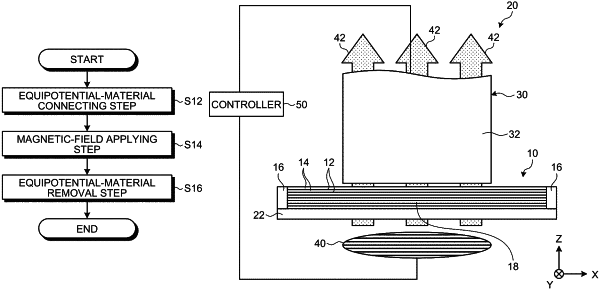| CPC B29C 70/54 (2013.01) [B29C 35/0805 (2013.01); B29C 70/20 (2013.01); B29C 2035/0811 (2013.01); B29C 2035/0816 (2013.01)] | 10 Claims |

|
1. A method for forming a composite material including reinforcing fibers, the method comprising:
connecting end portions of the reinforcing fibers with equipotential materials to form an electroconductive loop including the reinforcing fibers in the composite material before reaction;
applying a magnetic field in a direction intersecting a plane formed by the electroconductive loop; and
removing the equipotential materials after applying the magnetic field, wherein
connecting the end portions includes placing electrically conductive jig materials serving as the equipotential materials on the composite material to form the electroconductive loop, and
removing the equipotential materials includes withdrawing the electrically conductive jig materials as the equipotential materials from the composite material.
|